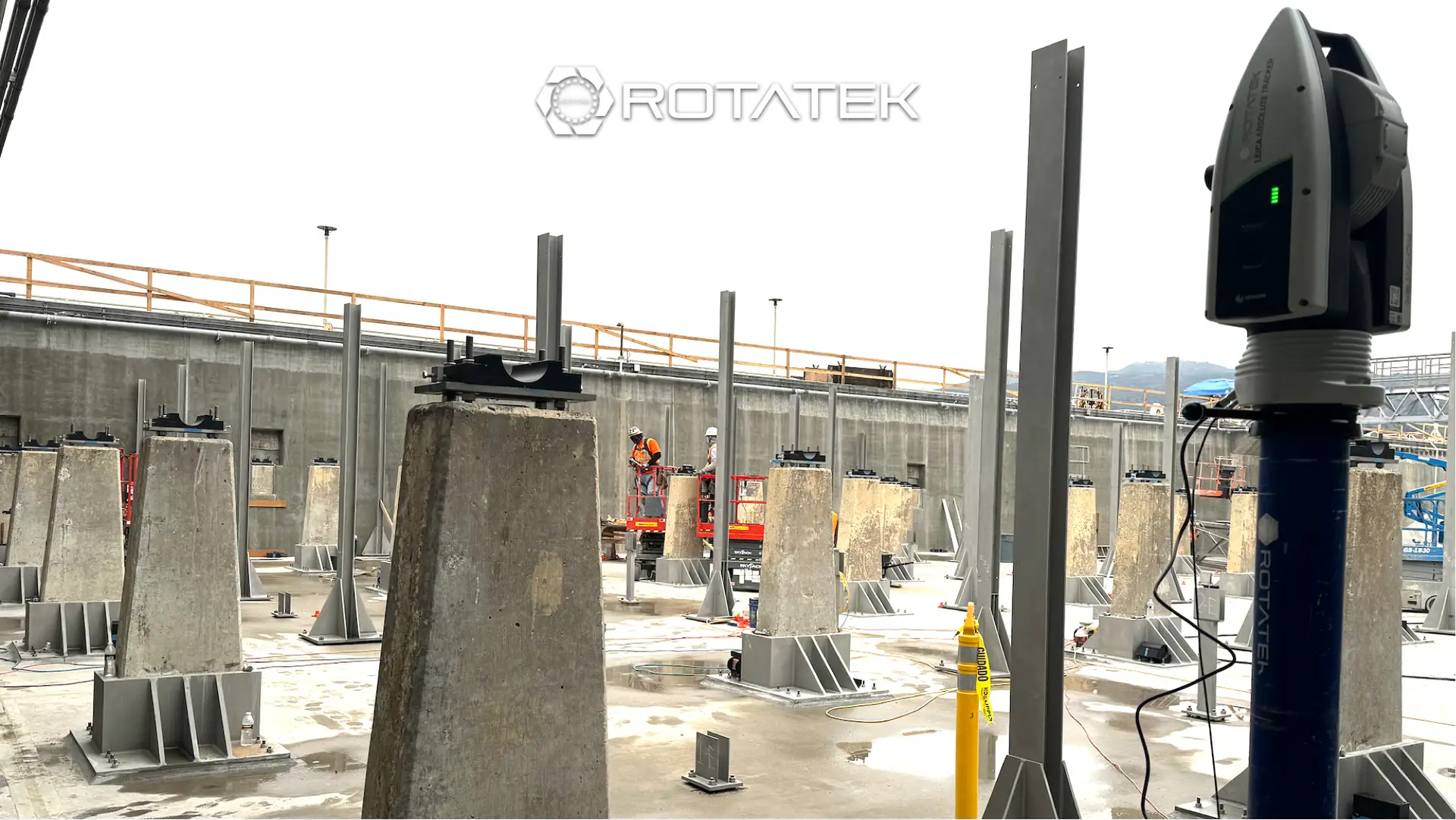
Precision Bearing Alignment You Can Trust
Ensure optimal performance and extended lifespan of your rotating equipment with Rotatek’s trusted bearing alignment services. Using advanced laser trackers and 3D metrology tools, we deliver high accuracy alignments for shafts, bores, plummer blocks, and critical bearing housings. From marine propulsion systems to industrial turbines, our certified technicians provide reliable, data-driven alignments that reduces wear, eliminates vibration, and prevents costly downtime.
A detailed graphical measurement report is supplied with all precision measurement services.
Our commitment to excellence paired with our state-of-the-art measurement capabilities makes ROTATEK your trusted precision service partner.
how Can we Help you?
Our expert team is ready to help you with your next project. Explore the industries we serve or contact us to learn more.
Bearing alignment is the process of precisely positioning bearings in three-dimensional space so that they are perfectly aligned with the rotational axis of a shaft or rotating assembly. This alignment ensures that the shaft runs smoothly, without introducing angular or offset errors that can lead to excessive friction, vibration, or mechanical failure. Proper bearing alignment is critical to the performance, efficiency, and longevity of rotating machinery.
Precision is everything when it comes to bearing alignment. While traditional methods laid the groundwork for aligning multi-bearing systems, today’s laser-based portable coordinate measuring machines offers significant advantages in speed, accuracy, and reliability. Unlike traditional alignment methods using piano wire, optical scopes and 2d laser optics, ROTATEK field engineers utilize cutting edge Laser Tracker technology for unparalleled accuracy, precision and measurement acquisition time.
Proper bore alignment is critical to the performance, reliability, and longevity of rotating machinery. Misaligned bores—whether in compressors, turbines, pumps, engines, gearboxes or propulsion systems —can lead to significant mechanical issues, including :
- Excessive Bearing Wear – Misaligned bores cause uneven loading on bearings, accelerating wear and increasing the risk of bearing failure.
-
Increased Vibration & Noise – Poor alignment introduces imbalance and shaft deflection, resulting in harmful vibrations that can affect nearby components.
-
Shaft Fatigue & Failure – Continuous stress on the shaft due to misalignment leads to cracks, fatigue, and eventual failure, especially in high-speed applications.
-
Energy Loss & Inefficiency – Misalignment increases friction and mechanical resistance, which forces systems to work harder and consume more energy.
-
Unplanned Downtime – When components fail prematurely due to misalignment, costly repairs and production halts are inevitable.
-
Shortened Equipment Lifespan – Persistent misalignment causes cumulative damage over time, reducing the usable life of machinery and increasing total cost of ownership.
At Rotatek, we use high-accuracy laser measurement tools to detect and correct bore misalignment down to microns. Whether during new installations or maintenance shutdowns, our expert technicians help ensure your machinery is running exactly as engineered—aligned, efficient, and reliable.
At Rotatek, we employ state-of-the-art laser tracker technology to perform high-precision bore alignment on critical rotating equipment. This method delivers exceptional unmatched accuracy and repeatability—essential in industries like power generation, marine, and aerospace, where microns matter.
Step 1: Pre-Alignment SETUP & Inspection
The equipment is thoroughly cleaned, and environmental conditions are evaluated to ensure stable measurement. Targets or SMRs (spherically mounted retroreflectors) are mounted to create a control network.
Step 2: LASER TRACKER DEPLOYMENT
- A high-precision laser tracker is positioned with an unobstructed view of all bores. The tracker emits a laser beam and uses triangulation and interferometry to measure the 3D position of each target with sub-millimeter accuracy.
Step 3: COORDINATE SYSTEM ESTABLISHMENT
A virtual datum line is created by referencing baseline bore centers. The laser tracker maps the exact 3D position of all bores relative to this line, allowing for highly accurate offset, angular, and centerline comparisons.
Step 4: MEASUREMENT AND ANALYSIS
- Measurement data is processed and analyzed to determine misalignments. Real-time data analysis enables immediate decision-making and corrective planning.
Step 5: MECHANICAL ADJUSTMENTS
Based on the measurement data analysis, adjustments are made to align the bores. This may involve shimming, baseplate correction, or housing movement. The laser tracker verifies each adjustment until optimal alignment is achieved.
Step 6: Final Validation & Reporting
A final measurement pass is conducted to ensure all alignment tolerances are met. A detailed, traceable report—including before/after data, graphical analysis, and 3D deviation plots—is provided for QA and maintenance records.
